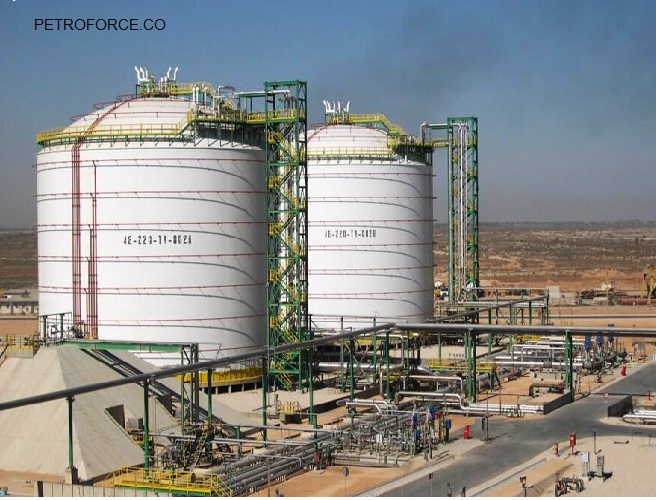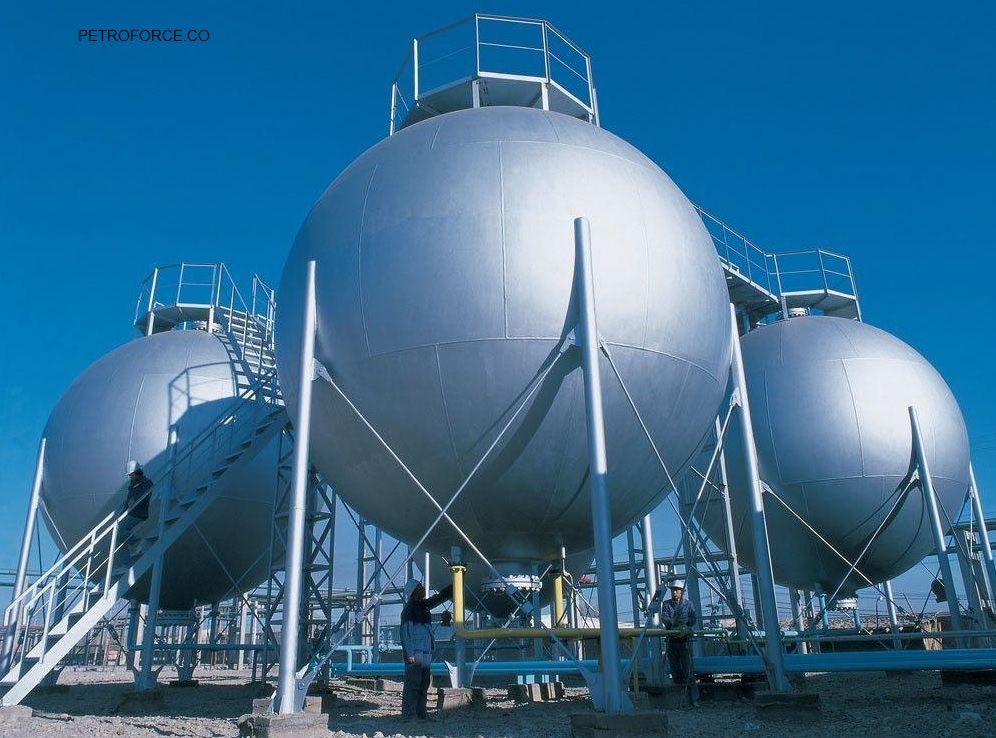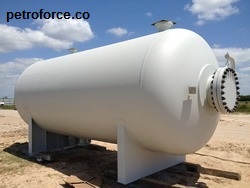storage tanks
In the chemical industry, valuable materials, such as gasoline or liquid gas, are separated in various processes from raw chemicals such as crude oil. There are several ways to transfer raw materials from the supplier to the process unit, which is used, as the case may be, from one of them, such as transmission lines or tankers. Productive products are also supplied to domestic or foreign markets in various ways. For many reasons, including product quality, product volume measurement, sale, loading and transfer to a tanker or ship in the shortest possible time, etc., causes the material to be stored in appropriate storage tanks or reservoirs. The term "tank" is used for large storage containers, with the application of the displacement, storage, measurement and transport of liquids.
In general, reservoirs can be classified into three major categories:
•Atmospheric storage tanks
•Spherical storage tanks
•Pressure Vessels
Atmospheric storage tanks
These reservoirs are used to store petroleum products or chemicals that are liquid at ambient temperature. Materials such as crude oil, gasoline, gasoline and heavy crude oil are stored in these tanks. These tanks are in different sizes and sizes, depending on the type of material to be stored, with different roofs.
 Spherical storage tanks
Spherical storage tanks
These reservoirs are used to store LPG. Given that propane and butane are gas at ambient temperature and converted to liquid at temperatures of -42,-7 ° C, they can not be stored in atmospheric reservoirs and should be stored to increase their pressure. Considering that the atmospheric storage tanks are not able to withstand high pressures, They should be kept in spherical reservoirs that can hold up to 1 bar.
 Pressure Vessels
Pressure Vessels
These tanks are often used in process units of refineries and petrochemicals. The Isomax Tower in oil refineries, the Di Methanizer Tower and the De-Ethanizer in gas refineries are samples of pressurized reservoirs. Minimum pressure in these tanks is 1 bar and up to 680 times.
 Specifications and Standards of the Reservoir
Specifications and Standards of the Reservoir
Considering the sensitivity of fuel storage tanks, especially in the oil and gas and petrochemical industries, and the requirement to comply with certain standards in the construction of these tanks, pishgam palayesh force Company Using the experienced forces and software world-wide, it has been designing and manufacturing a variety of fuel storage tanks in various volumes for oil, gas and petrochemical industries.
In the construction of storage tanks with capacities of up to 50 million liters, they should be designed and built in accordance with international standards.
In the design of storage tanks, various standards are used, the most well-known standards are:
ASME : The American Standard has discussed the types of cases involving tanks, including design, types of tanks, type of construction, connection methods, and more.
BS5500 : The British standard used in the design of the reservoirs.
(DIN) AD_MARK BLATT : Germany's standard for reservoir design in which 2 Coefficient of confidence Considered to be.
API650 , API620 : The standard in the storage tanks used for pressures below 2.5 psi is the API650 standard.
Quality standard of consumables
Properties of steels and consumables in the construction of reservoirs with different characteristics such as mechanical strength, flexibility, hardness, toughness and fatigue strength can be investigated. These indicators, in addition to determining the resistance of materials to the loads applied to the structures, also indicate the ability of welding in certain conditions and ductility, Which is important to the designer's necessity of the type of construction and its application.
Valid standards used in this area: DIN, AWS, ASTM, ASME, BS.
Welding quality standards
Welding methods and welding quality are considered in accordance with quality standards. The most widely used standards in this field are:
AWS D1.1
DIN EN 22553
ISO 5817
Each of these standards will be usable in accordance with the design standards and terms of use.





